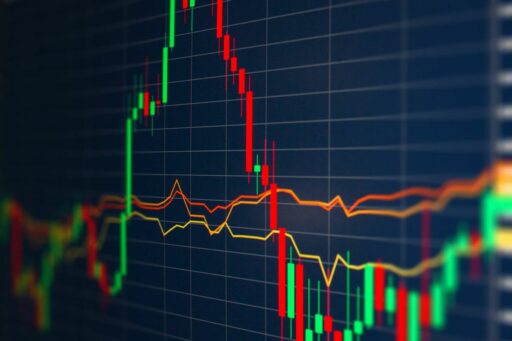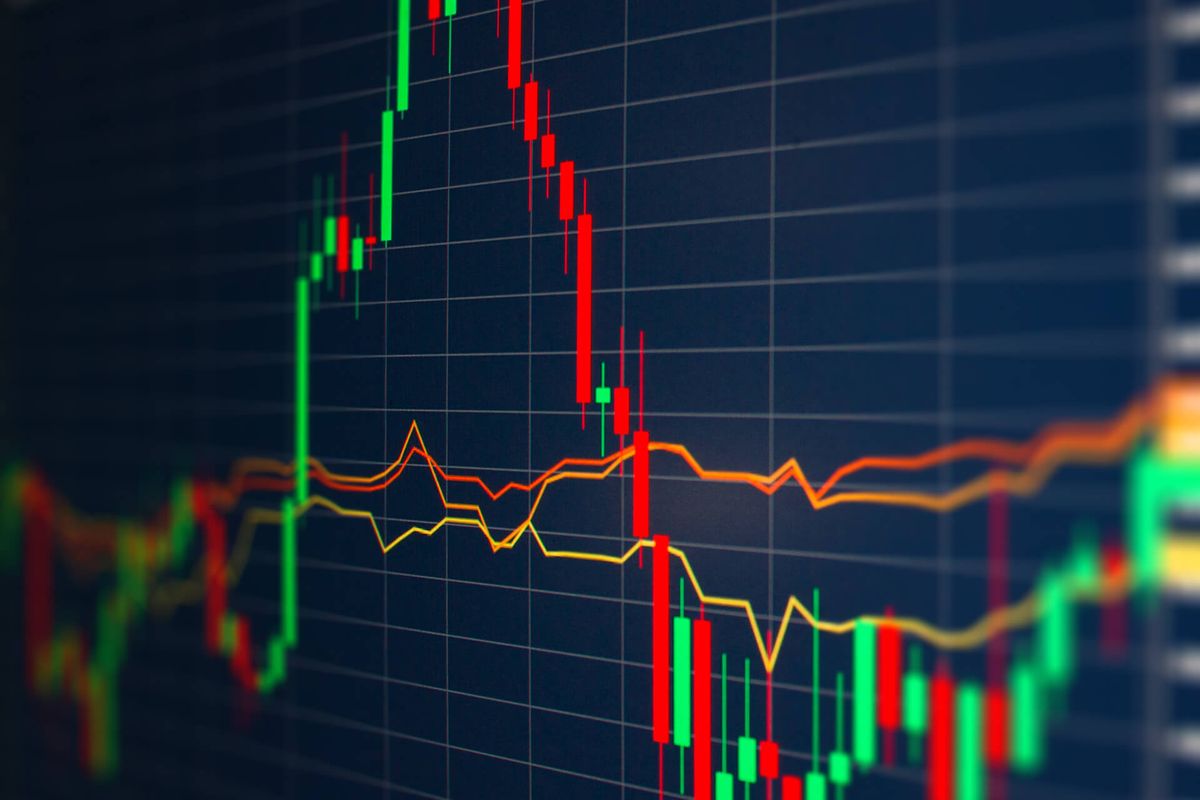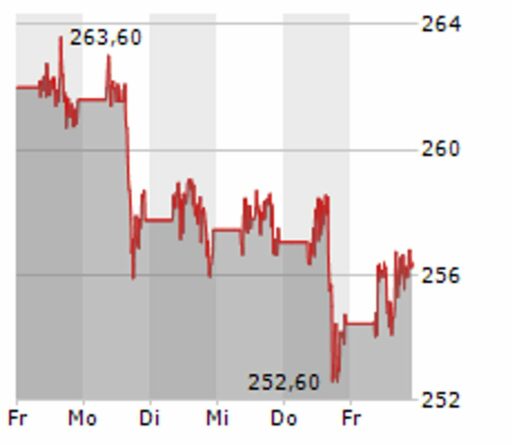Robinhood Markets Inc., once a Silicon Valley darling, has experienced a rollercoaster ride in the financial markets. From its impressive user growth and initial public offering (IPO) to facing intense market volatility, legal challenges, and economic setbacks, Robinhood’s journey encapsulates the highs and lows of a disruptive fintech company. Despite the hurdles, the platform has made significant strides towards recovery and adaptation in the fast-evolving fintech landscape. This article traces the trajectory of Robinhood’s stock journey, exploring the factors that have shaped its past and the potential that lies ahead.
Key Takeaways
- Robinhood achieved rapid growth and Silicon Valley success, culminating in an IPO that significantly enriched its founders.
- The platform faced a tumultuous period marked by the GameStop saga, a dip in cryptocurrency values, and a slew of legal issues.
- Financial challenges, including a liquidity crisis and a steep decline in stock value, led to the founders losing billionaire status.
- Robinhood has taken measures to improve user experience, ensure regulatory compliance, and develop new products for market adaptation.
- Looking forward, Robinhood must navigate a competitive brokerage ecosystem and regulatory changes while strategizing for future growth.
The Rise of Robinhood: A Silicon Valley Success Story

Surpassing User Expectations
Robinhood’s ascent in the financial world was marked by a series of achievements that not only surpassed user expectations but also reshaped the brokerage industry. The platform’s intuitive design and commission-free trading model attracted a new generation of investors, contributing to its rapid growth and popularity.
- User base expansion
- Commission-free trades
- Intuitive app interface
Robinhood’s earnings surprise could be the start of something bigger, with the platform now managing around $1.7 billion in retirement assets.
The company’s aggressive incentive programs played a significant role in this expansion, demonstrating Robinhood’s commitment to accessibility and innovation in the financial sector.
The IPO Ascent
Robinhood’s initial public offering (IPO) marked a significant milestone in the company’s history. The anticipation built over the years was realized in late July when shares were offered at $38 a piece. The excitement was palpable as the stock price soared, reaching heights above $70 within just a week, signaling strong investor confidence.
The IPO not only represented a financial zenith but also a cultural moment, as Robinhood’s mission to democratize finance resonated with a broad audience. However, the move to allocate a larger portion of its shares to its users—a nod to its ethos—was met with mixed reactions. While some saw it as a revolutionary step, others recalled how a similar strategy had backfired spectacularly for another tech giant during its IPO.
Despite the initial surge, the journey post-IPO was not without its challenges. The company faced scrutiny and volatility, which would test the resilience of its stock and the loyalty of its investors.
Silicon Valley Pedigree and the Billionaire Founders
The founders of Robinhood hail from prestigious Silicon Valley backgrounds, embodying the innovative spirit that drives the tech industry. Their journey from idea to execution is a testament to their entrepreneurial prowess and deep understanding of the market’s needs. Robinhood’s leadership team brought a fresh perspective to the brokerage industry, democratizing access to financial markets for a new generation of traders.
Following the Silicon Valley tradition, Robinhood’s founders leveraged their tech-savvy to disrupt a well-established industry. Their success story is not just about creating a user-friendly platform but also about the strategic partnerships and funding that propelled the company to unicorn status. The table below highlights the key milestones in Robinhood’s funding journey:
| Funding Round | Amount Raised | Year |
|---|---|---|
| Series A | $3M | 2013 |
| Series B | $13M | 2014 |
| Series C | $50M | 2015 |
| Series D | $110M | 2017 |
| Series E | $363M | 2018 |
The rapid growth and significant capital raised reflect the confidence investors had in Robinhood’s potential to revolutionize the financial services sector.
The caliber of Robinhood’s founders also attracted top talent, such as Jayendra Jog, who, after graduation, commenced his career at the company. Their ability to inspire and lead a team of bright individuals has been crucial in navigating the complex landscape of financial regulations and technological challenges.
Turbulence in the Market: Robinhood’s Struggle with Stability

The GameStop Phenomenon and Its Aftermath
The events of January 28, 2021, marked a pivotal moment in Robinhood’s history. Retail investors, galvanized by social media, coalesced to drive up the prices of stocks like GameStop and AMC Entertainment, creating unprecedented volatility. This surge, often referred to as the ‘meme-stock era’, not only impacted the market but also put Robinhood’s systems to the test.
In the wake of this phenomenon, Robinhood has taken steps to strengthen its platform. The company has significantly increased its capital reserves, ensuring a more robust financial footing.
Despite these efforts, the aftermath of the GameStop saga continues to reverberate through Robinhood’s operations. The table below highlights the key financial metrics before and after the event:
| Metric | Pre-GameStop Event | Post-GameStop Event |
|---|---|---|
| User Growth Rate | High | Stabilized |
| Stock Price Volatility | Moderate | High |
| Capital Reserves | Adequate | Substantially Higher |
Robinhood’s journey through the GameStop phenomenon has been a testament to the platform’s resilience and adaptability in the face of unforeseen market dynamics.
Facing the Cryptocurrency Conundrum
As Robinhood ventured into the volatile world of cryptocurrency trading, it faced a conundrum that tested its resilience and adaptability. The platform’s expansion to include popular cryptocurrencies like Solana, Cardano, and Polygon was met with both excitement and trepidation, especially following regulatory crackdowns on major exchanges.
The market’s volatility was palpable, with significant fluctuations in user investments. For instance, during a period of intense market activity, Bitcoin surged to a record high before experiencing a sharp retreat. This unpredictability posed a challenge for Robinhood, as it strived to maintain user trust and platform stability.
In the midst of these challenges, Robinhood’s commitment to providing a secure and user-friendly platform remained unwavering. The company’s efforts to navigate the cryptocurrency landscape were a testament to its dedication to innovation and customer service.
Despite the hurdles, Robinhood’s foray into crypto trading signaled a broader trend of fintech companies embracing digital currencies. The table below highlights the market’s response to cryptocurrency movements:
| Cryptocurrency | Event | Market Reaction |
|---|---|---|
| Bitcoin | Surged to record high | Positive momentum |
| Bitcoin | Briefly touched all-time high before retreat | Mixed sentiment |
| Memecoin | Frenzy reaches crescendo | Speculative interest |
The journey through the cryptocurrency market was a rollercoaster of highs and lows, but Robinhood’s proactive approach aimed to secure a foothold in this burgeoning sector.
Legal Repercussions and Class-Action Lawsuits
The journey of Robinhood through the financial landscape has been marked by significant legal challenges. The decline in trust and stock value was exacerbated by a series of class-action lawsuits. These legal battles stemmed from allegations that Robinhood misled investors about its revenue growth prospects and failed to maintain the reliability of its trading platform.
In a striking blow to its reputation, Robinhood faced accusations of not adequately informing its users, particularly those new to investing, about the risks associated with market volatility.
The lawsuits have highlighted the need for greater transparency and reliability from fintech companies, especially those catering to a novice investor base. The timeline of these legal entanglements is complex, with multiple suits overlapping in accusations and timelines:
- Allegations of misleading investors
- Accusations of platform unreliability
- Privacy breaches affecting millions
- Slow user growth and engagement
- Unfulfilled product promises
Each lawsuit adds to the narrative of a company grappling with the consequences of rapid growth and the responsibility that comes with democratizing access to the stock market.
Financial Fumbles: Robinhood’s Economic Challenges

The Liquidity Crisis and Its Consequences
The liquidity crisis that Robinhood faced was a pivotal moment in the company’s history, underscoring the delicate balance required to maintain sufficient capital reserves while meeting user demands. During the height of the market volatility, Robinhood’s decision to restrict trading on certain stocks, including GameStop, led to widespread user dissatisfaction and a crisis of confidence in the platform.
The restrictions placed on trading were not only a shock to Robinhood’s user base but also highlighted the complexities of market mechanics and the responsibilities of brokerage firms.
The following table outlines the key dates and actions taken by Robinhood during the crisis:
| Date | Action Taken |
|---|---|
| Jan 28, 2021 | Restricted trading on GameStop and others |
| Feb 1, 2021 | Trading restrictions eased |
| Feb 4, 2021 | Testimony before Congress |
This sequence of events led to a broader discussion about market fairness and the role of retail investors in the stock market. It also prompted Robinhood to reevaluate its financial strategies and ensure better preparedness for future market surges.
Stock Performance and Investor Sentiment
The trajectory of Robinhood’s stock has been a rollercoaster ride for investors, marked by significant volatility and shifts in market sentiment. Investor confidence has wavered as the company faced various challenges, from regulatory scrutiny to fierce competition in the fintech space.
Market performance indicators suggest a correlation between Robinhood’s strategic decisions and its stock valuation. For instance:
- Q2 2023: A dip following the announcement of lower-than-expected earnings.
- Q3 2023: A brief rally after unveiling new security features.
- Q4 2023: Decline in user growth led to a fall in stock prices.
The fluctuating stock prices reflect not just the company’s financial health but also the changing perceptions of its potential for long-term success.
Investors are closely monitoring Robinhood’s next moves, as these could either restore faith in the stock or further erode shareholder value. The company’s ability to innovate and adapt to market demands remains a critical factor in shaping its future.
The Fall from Billionaire Status
The once-celebrated billionaire status of Robinhood’s founders has been compromised as the company’s stock value plummeted. The stark reality set in as shares dropped 67% since the IPO, eroding the wealth of CEOs Vlad Tenev and Baiju Bhatt significantly. This decline in personal fortune mirrors the broader financial challenges faced by the company.
The journey from Silicon Valley darlings to facing economic adversity underscores the volatile nature of the tech and finance industries.
While the founders’ billionaire status may have faded, the impact of their decisions continues to ripple through the company’s financial health. Here’s a snapshot of the stock’s journey:
| Date | Stock Price | Percentage Change |
|---|---|---|
| IPO Date | $38.00 | – |
| Record Low | $12.41 | -67% |
The comparison with peers is also telling, as established brokerages like Charles Schwab and Interactive Brokers have seen their shares rally by 33% and 7% respectively in the same period. This contrast highlights the competitive pressures and market dynamics that Robinhood must navigate.
Innovation and Improvement: Robinhood’s Path to Recovery

Enhancing User Experience and Security
In the wake of challenges, Robinhood has prioritized enhancing user experience and security, aiming to regain trust and provide a seamless trading environment. The platform has introduced a range of features designed to simplify navigation and empower users with tools for informed decision-making.
Key improvements include:
- Cash management accounts for better fund organization
- Advanced charts accessible to all users, facilitating a more sophisticated analysis
- Low fees maintaining the platform’s competitive edge
- Automatic saving and investing tools that assist users in building their portfolios
- Portfolio suggestions tailored to individual risk preferences
Robinhood’s commitment to user experience extends to offering fractional share investing, allowing participation with as little as $1. This democratizes access to the stock market, making it more inclusive. Additionally, community features and educational resources have been bolstered to foster a collaborative and informed user base.
Capital Reserves and Regulatory Compliance
In the wake of financial scrutiny, Robinhood has taken significant steps to bolster its capital reserves and ensure stringent regulatory compliance. The company’s proactive measures have been pivotal in restoring investor confidence and aligning with the industry’s evolving regulatory demands.
- Strengthening of capital reserves to meet potential financial contingencies
- Implementation of robust compliance frameworks to adhere to regulatory standards
- Continuous monitoring and updating of policies to reflect the latest regulatory changes
Robinhood’s commitment to maintaining a solid financial foundation and regulatory adherence is not just about meeting the minimum requirements; it’s about setting a new standard for fintech accountability and trust.
The journey towards regulatory compliance and financial stability is ongoing, with Robinhood consistently reviewing and enhancing its strategies to mitigate risks and protect its users’ interests.
Product Development and Market Adaptation
In the face of fluctuating market conditions, Robinhood has recognized the need for continuous product development and market adaptation. The strategic initiatives for 2024, including product development and international expansion, may further bolster the company’s market position if executed effectively. This approach is not just about diversification but also about enhancing the platform’s resilience against market volatility.
To stay ahead, Robinhood is focusing on several key areas:
- Developing new financial products that cater to the evolving needs of investors.
- Improving existing services to ensure a seamless user experience.
- Expanding into new markets to capture a broader customer base.
The company’s commitment to innovation is pivotal in maintaining its competitive edge in the dynamic fintech landscape.
By adapting to the ever-changing demands of the financial world, Robinhood aims to secure its place as a leading brokerage firm. The unpredictable market tide necessitates a strategy that is both proactive and reactive, ensuring that Robinhood remains a relevant and reliable platform for its users.
The Future of Fintech: Robinhood’s Place in the Evolving Landscape

Competing in the Brokerage Ecosystem
In the fiercely competitive brokerage ecosystem, Robinhood continues to carve out its niche, appealing to a new generation of investors with its user-friendly platform. The challenge lies in maintaining relevance and growth amidst a sea of established players and emerging fintech startups.
- Established Brokerages: Firms like Charles Schwab and Interactive Brokers have shown resilience and growth, even as Robinhood’s stock has faced significant declines.
- Robo-Advisors: These automated platforms prioritize simplicity and cost-effectiveness, contrasting with Robinhood’s hands-on approach.
- Unique Tools and Analytics: Platforms such as Chase offer specialized resources that cater to niche markets like penny stocks, highlighting the importance of differentiation.
Robinhood’s journey is a testament to the volatility and dynamism of the fintech sector. As it prepares to report its latest quarterly results, stakeholders are keenly awaiting signs of a strategic pivot that could signal a new chapter for the company.
Adapting to Regulatory Changes
In the ever-evolving fintech landscape, Robinhood has been proactive in adapting to regulatory changes to ensure compliance and maintain user trust. The company’s efforts to align with new regulations have been multifaceted, involving updates to their platform, increased transparency, and enhanced user education.
- Platform Updates: Implementation of new features to meet regulatory requirements.
- Transparency: Clear communication with users about how their data is used and how trades are executed.
- User Education: Providing resources to help users understand market risks and the implications of their investment decisions.
Robinhood’s commitment to regulatory adaptation is not just about compliance; it’s about building a sustainable platform that can weather the shifts in the regulatory environment and protect its users.
With the fintech industry under close scrutiny, Robinhood’s ability to pivot and embrace regulatory changes will be crucial for its future success. The company’s recent surprise profit in Q4 2023 indicates a potential return to growth, suggesting that its strategic adjustments may be paying off.
Strategic Moves and Potential Outcomes
In the ever-shifting landscape of fintech, Robinhood’s strategic maneuvers are pivotal to its survival and growth. Bold moves in product innovation and partnerships could redefine its market position, while a keen focus on customer trust may revitalize its brand. The outcomes of these strategies are multifaceted, potentially leading to:
- Enhanced market share through differentiated offerings
- Improved regulatory relationships
- Strengthened investor confidence
The path ahead for Robinhood is fraught with challenges, yet it is also lined with opportunities for those willing to adapt and innovate.
As Robinhood charts its course, the interplay between strategic decisions and market responses will be critical. The company’s ability to anticipate and react to the dynamic demands of the financial sector will likely determine its future trajectory in the competitive world of fintech.
Conclusion
The journey of Robinhood Markets Inc. has been a tumultuous one, marked by rapid growth, public controversies, and significant financial challenges. From its peak as a Silicon Valley darling heading towards a promising IPO, to facing the chaos of the meme-stock era and a series of operational hurdles, Robinhood’s story is a testament to the volatile nature of the fintech industry. Despite the setbacks, including a stark decline in stock value and legal battles, the company has shown resilience, making strides to improve its platform and financial standing. As Robinhood continues to navigate the complexities of the market and regulatory environment, it remains to be seen whether it can regain its former glory and rebuild trust with its users and investors. The Robinhood stock journey, with all its ups and downs, serves as a cautionary tale and a learning opportunity for emerging tech-driven brokerages in the ever-evolving financial landscape.
Frequently Asked Questions
What was Robinhood’s user count before its IPO?
Before its initial public offering, Robinhood Markets Inc. had surpassed 12.5 million users.
What challenges has Robinhood faced since the GameStop phenomenon?
Robinhood has faced slowed user growth and engagement, a delay in delivering product ideas, a drop in cryptocurrency prices affecting their crypto wallets launch, and a significant decline in their share price leading to class-action lawsuits.
How did the GameStop event in January 2021 impact Robinhood?
The GameStop event led to a surge of retail investors using Robinhood’s app, which contributed to unprecedented trading volumes and the meme-stock era. This put a strain on Robinhood’s financial resources and led to a liquidity crisis.
What measures has Robinhood taken to improve its financial stability?
Robinhood has raised billions in fresh capital, drawn down credit lines, and improved its capital reserves to a net $2.8 billion, significantly above the requirement set by the U.S. Securities and Exchange Commission.
How has Robinhood’s stock performance been since its IPO?
Since its IPO, Robinhood’s stock has plummeted by 67%, marking a significant decline from its debut price.
What is Robinhood’s current stance on cryptocurrency trading?
Despite facing a revenue miss after crypto volumes tumbled, Robinhood has continued to offer cryptocurrency trading and has listed improvements to its platform over the past year to better serve its customers in this market.





